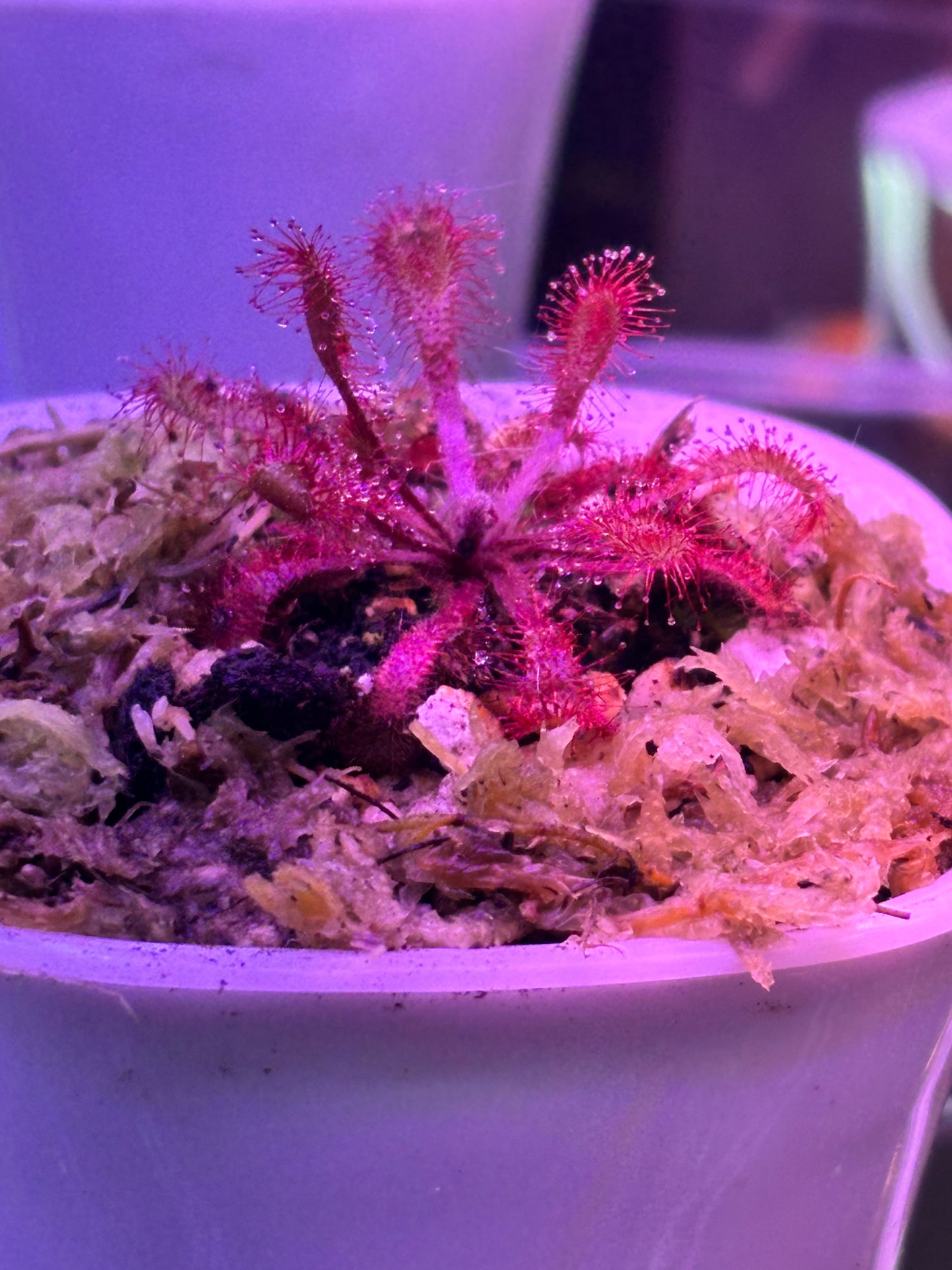Text block
Drosera Collinsiae Carniverous Plant Sundew - Self Watering Pot
Drosera Collinsiae Carniverous Plant Sundew - Self Watering Pot
Couldn't load pickup availability
Share
Drosera collinsiae: The Elegant Sundew
Drosera collinsiae, commonly known as Collins’ Sundew, is a fascinating and elegant carnivorous plant native to South Africa. It is known for its rosette of spoon-shaped leaves, which are covered in sticky glandular hairs that trap and digest insects. This plant is highly prized for its ability to catch prey and its stunning appearance, with leaves that glisten in the sunlight due to the droplets of mucilage it secretes. As a relatively easy-to-care-for sundew, Drosera collinsiae is a great addition to any carnivorous plant collection.
Why You’ll Love It:
• Carnivorous Nature: This plant naturally catches insects with its sticky, dew-covered leaves, making it a fascinating plant to observe.
• Compact and Elegant: Its compact rosette form and shimmering leaves make Drosera collinsiae an attractive, eye-catching houseplant.
• Low Maintenance: Like other sundews, it is relatively easy to care for as long as it receives the right light and water conditions.
• Perfect for Carnivorous Plant Enthusiasts: If you love carnivorous plants, Drosera collinsiae is an excellent choice due to its unique looks and insect-catching ability.
Care Instructions:
Light:
• Drosera collinsiae thrives in bright, indirect sunlight or under artificial grow lights. Ideally, it should receive around 12 hours of light per day. If growing indoors, place it near an east or south-facing window but avoid direct, harsh sunlight, which can cause leaf burn.
Water:
• Water the plant with distilled water, rainwater, or reverse osmosis water. Tap water contains minerals that can harm the plant.
• Keep the soil consistently moist by using the tray method. Place the pot in a shallow tray of water and allow the plant to absorb water from the bottom. Never let the plant dry out.
• Drosera collinsiae loves humidity, so high humidity levels will help maintain healthy growth.
Humidity:
• This sundew prefers high humidity, ideally between 50% and 80%. If your indoor environment is dry, you can increase humidity by misting the plant regularly or placing it near a humidity tray.
Soil:
• Use a nutrient-poor, well-draining soil mix. A combination of peat moss and perlite (50:50) or sphagnum moss works well for this carnivorous plant. Avoid regular potting soil, which contains too many nutrients.
Temperature:
• Drosera collinsiae prefers temperatures between 60°F and 80°F (16°C to 27°C). It is a tropical plant, so it does not require dormancy and should be kept in warm conditions year-round.
Feeding:
• This carnivorous plant naturally catches insects such as gnats and fruit flies on its sticky leaves. If grown indoors where it may not catch enough prey, you can feed it small, dried insects (such as dried bloodworms) every few weeks to supplement its diet.
• Do not fertilize the plant, as this can harm it.
Propagation:
1. Leaf Cuttings:
• Best Time: Spring or summer during active growth.
• Steps:
1. Take a healthy leaf and lay it flat on a moist substrate such as sphagnum moss or a peat-perlite mix.
2. Mist the substrate lightly and place the cutting in bright, indirect light.
3. In a few weeks, tiny plantlets will form along the edges of the leaf.
2. Seed Propagation:
• Sow the seeds on the surface of moist peat-perlite mix, and do not cover them, as they require light to germinate. Keep the substrate moist, and seeds should germinate in 2–6 weeks under the right conditions.
Key Features:
• Insect-Trapping Leaves: The spoon-shaped leaves are covered in glistening droplets of sticky mucilage that attract, trap, and digest insects.
• Compact Growth: The plant forms a neat rosette of leaves, making it a compact and easy-to-display houseplant.
• Low Nutrient Requirements: Like other carnivorous plants, it grows best in nutrient-poor soil and obtains its nutrients from the insects it traps.
Conclusion:
Drosera collinsiae is a beautiful, low-maintenance carnivorous plant that adds a touch of intrigue and elegance to any plant collection. Its glistening, sticky leaves and ability to catch insects make it a fascinating plant to observe, and its compact form makes it ideal for indoor cultivation. By providing bright light, distilled water, and nutrient-poor soil, you can enjoy a healthy and thriving Drosera collinsiae that will reward you with its unique, insect-trapping beauty.












